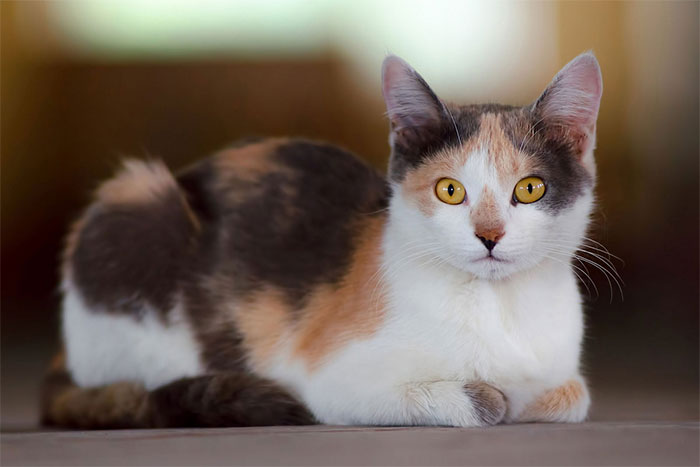Why are calico cats always female?
Typically, 2,999 out of 3,000 calico cats are female. Male calico cats are extremely rare, and are mutated.
A calico cat is a cat whose coat has three basic colors in distinct areas, usually yellow/tan/red, black/tan, and white. In English, they are called "calico" cats.
Calico cats occur in many different breeds, so "calico" is simply a classification of cats based on coat color and is not a distinct breed.



Calico cats are considered lucky animals.
The vast majority of calico cats are female. The reason is that the genes that determine the yellow/tan color group and the black/tan color group are both located on the X sex chromosome . Therefore, only female cats (with 2 X chromosomes) are capable of carrying 2 genes that determine the 2 different color groups above at the same time.
Normally, 2,999 out of 3,000 calico cats are female. Male calico cats are extremely rare, they are individuals with the Klaifenter mutation or are formed by embryo fusion (chimera) . Male calico cats are almost always sterile due to abnormalities in the sex chromosomes. In 3,000 male calico cats, only one can give birth.
In many folklores, calico cats are considered lucky. In America, calico cats are known as "money cats".
The Japanese lucky cat Maneki Neko is mainly a depiction of a calico cat. In addition, calico cats of the Japanese Bobtail breed are especially popular among cat fanciers.
In some parts of ancient Europe, it was believed that calico cats would protect homes against fire or other disasters, protect people from fever, and extinguish flames when thrown at them.
In Vietnam , the calico cat appears in the story "The Cat Thief" in the Trang Quynh series, one of the most famous Vietnamese folk tales.
- Scientific discovery may solve 10,000-year-old mystery inside calico cat's fur
- The 'strange' cats in the world
- Transgender surgery for cats
- Tiny wild cat resilient to female lion lions
- Female or male cats live longer?
- Did you know how to caress cats properly?
- In the end human beings were able to understand the Cats
- Cats - mass assassins in the animal world
- 10 interesting things about cats
- Cats were in solitary confinement for leading their fellow escapes
- Strange ability of cats
- New breed of hybrid cat wolf
 'Fine laughs' - Scary and painful torture in ancient times
'Fine laughs' - Scary and painful torture in ancient times The sequence of numbers 142857 of the Egyptian pyramids is known as the strangest number in the world - Why?
The sequence of numbers 142857 of the Egyptian pyramids is known as the strangest number in the world - Why? History of the iron
History of the iron What is alum?
What is alum?